After our tour through Basel and Weil am Rhein, we continued our journey into southern Germany by train, moving farther away from Italy and into the industrial city of Stuttgart.
Stuttgart was quite a change from Rome and seemed to be much more liberated from its past. Unlike Rome, which is often gripped by its history in every facet of urban and architectural design, the physical destruction of Stuttgart from the firebombing of Allied forces and the city’s following reluctance to return to former ideologies, seemed to clear the way for new urban and architectural ideas.
From the neoclassical references of the Glyptothek to Coop Himmelblau’s anti-historic stance with its Academy of Fine Arts, the different notions of what the museo diffuso could be conveyed the conflicting opinion that Germany has about its past and future. It certainly provided us with a refreshing outlook of different projects and ideas.
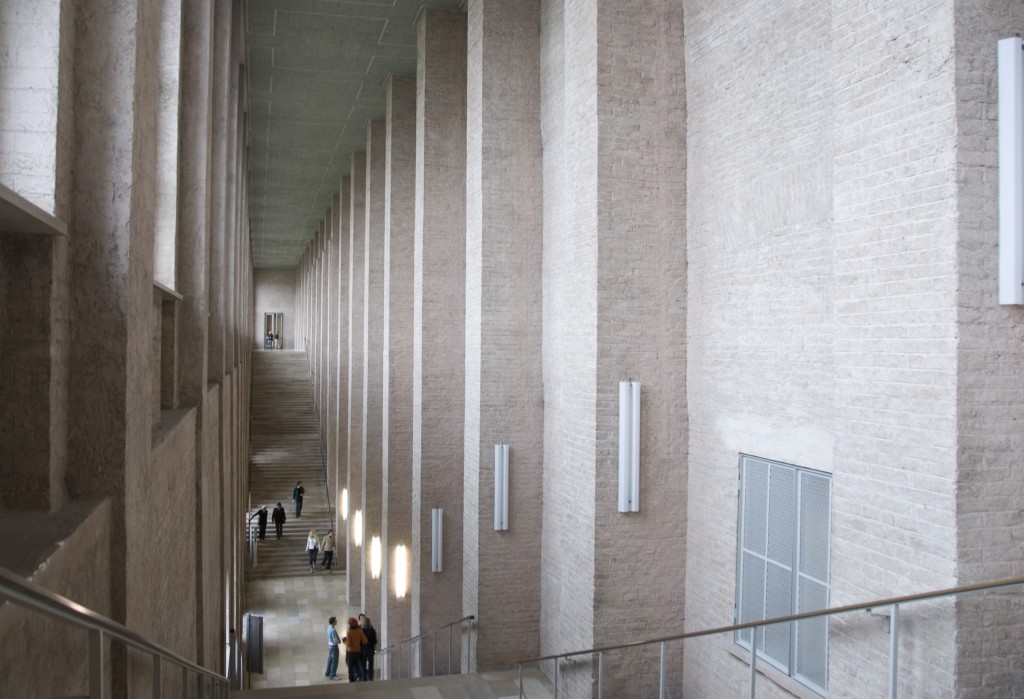
The Alte Pinakothek in Munich is a good example of this particular dilemma in postwar Germany. Partly destroyed during the firebombing of Stuttgart, the museum’s destroyed areas were reconstructed in a reduced fashion, continuing the repetition of the building’s existing framework but leaving the skin of the building to simple brickwork and the insertion of a grand staircase. This renovation gave a different reading of the facade on the outside, capturing the trace and memory of the building’s physical history.

The Glyptothek at Konigsplatz also faced this particular dilemma, where its architect renovated the museum by retaining the building’s original structure while getting rid of any existing ornamentation.

The street running through Konigsplatz was also the location where the Third Reich used the site as an urban stage for its notorious rallies. On that day, we ran into carnival parade along the same street. Of course with all its merry festivities, animation and popular costumes, we spent some of our precious programmed time watching floats pass by and having candy thrown at us, perhaps to the chagrin of our professors who wanted to keep us on schedule.
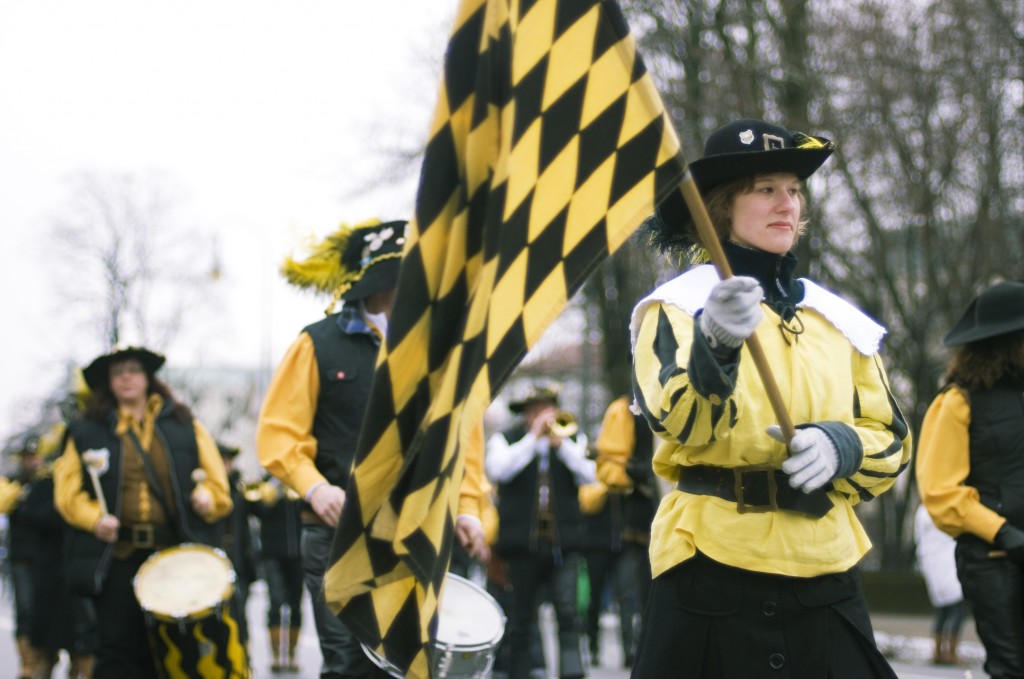
Stuttgart is also regarded as the city where the automobile was invented. It therefore wasn’t surprising that we visited two car museums on the same day.
Our first car museum was the Mercedes Benz Museum by UNStudio, which brilliantly sequenced the museum design with its surroundings as well as the museum’s exhibition.
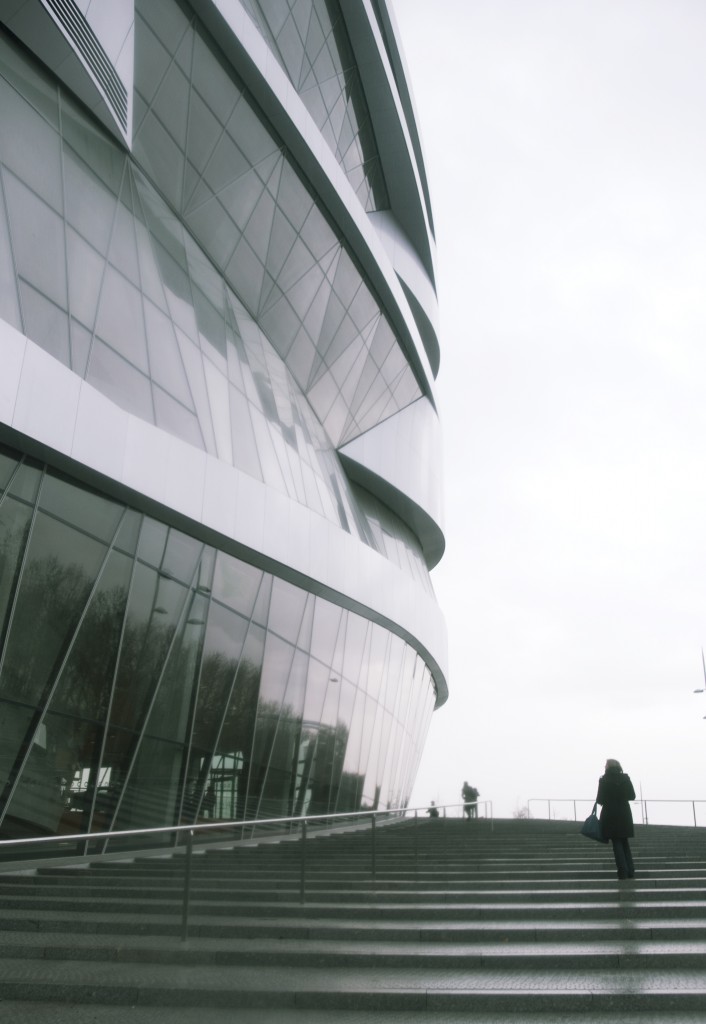


The Porsche museum by Delugan Meissl had a majority of its exhibition lifted above the street. The interior spaces, unlike the Mercedes Benz Museum, felt awkward and did not parallel with the quality and performance of its Porsche cars.

Going from one car museum to the next, it seemed as if these museums were competing against each other for your attention. There is certainly a true show-off factor in all of these museums- a fanciful circus where the flare of its building represents the quality and ethos of its company.

Perhaps the most extravagant of this museum type is Coop Himmelblau’s BMW Welt Museum in Munich, Germany. The double cone glass and steel structure is quite an engineering and architectural marvel itself. But I wasn’t sure whether it was the building itself or the cars that was trying to grasp for my attention as both were displayed in quite extravagant ways.

Germany holds a strong reputation in creating products with high attention to craft and engineering and this was very apparent in many of the buildings and infrastructure we visited. If I were an architect, I would hire a German engineer any day.
Frei Otto perhaps is one of the leading architects who is able to integrate engineering and design together in beautiful ways. We saw his Olympic Stadium, a fantastic tensile structure built for the Munich Olympics in 1968. Even to this day, the park looks cutting edge and very fresh compared to many of the stadiums we have seen.
- Frei Otto’s Olympic Stadium
Herzog de Meuron, instead, employs a far different tactic for the Allianz Arena in Munich, wrapping its stadium with an innovative facade. It integrates the parking lot underneath an artificial landscape and thereby provides a magnificent procession route towards the stadium itself. The facade is beautiful and has an ephemeral quality as you move closer toward it. What may seem like a massive white object from a far distance is in fact a field of air inflated panels upon closer encounter.
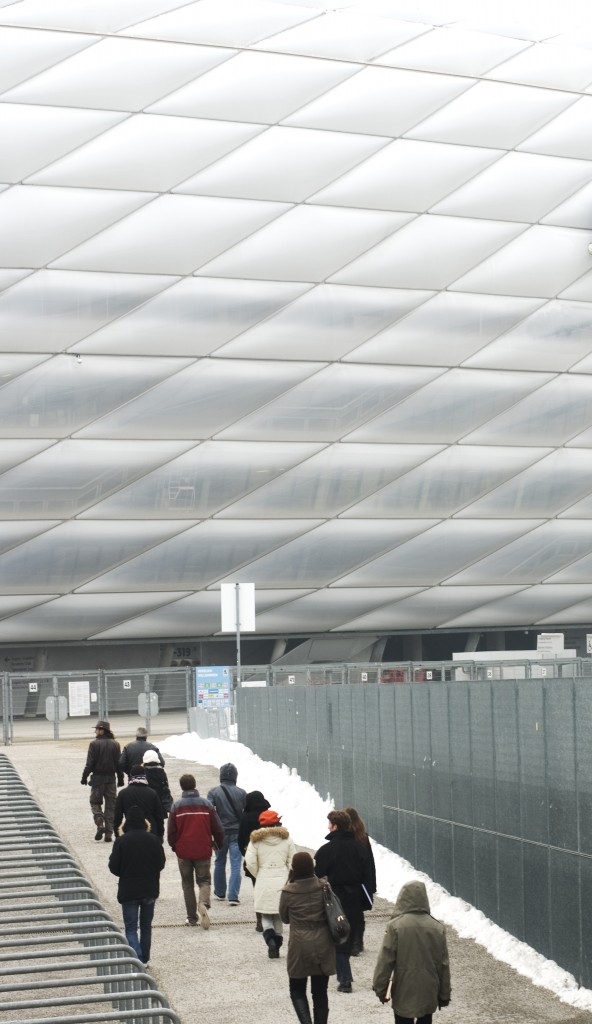
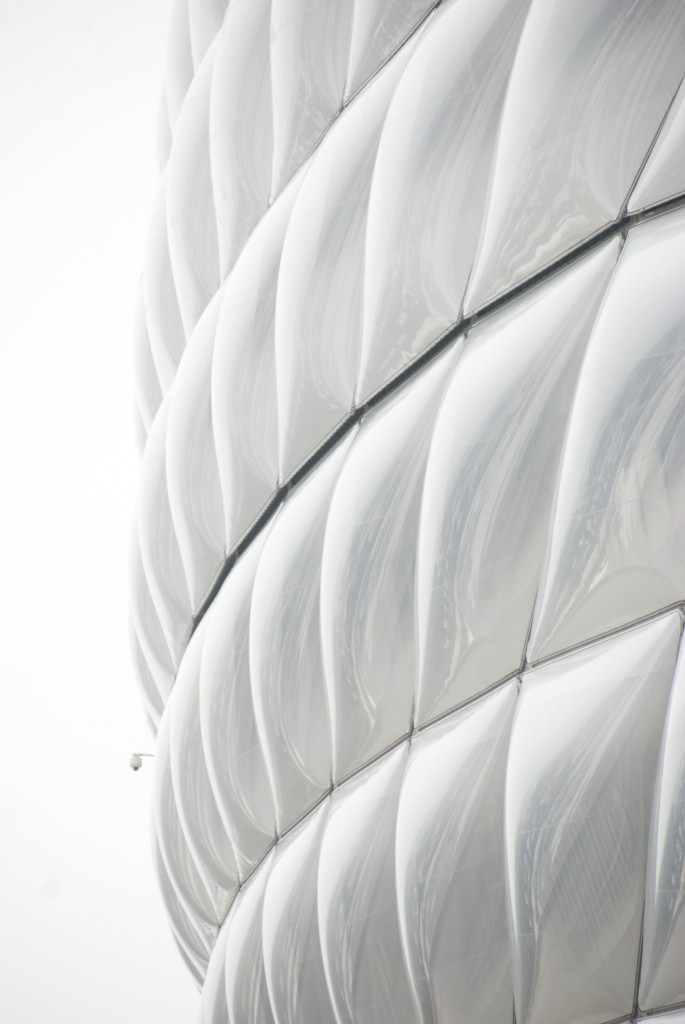
In a shopping mall in Munich, Herzog & de Meuron creates a vertical garden with light, creating magical and ethereal illumination of the space and surreal reflection.

Another component of the trip dealt with public housing. We visited Weisenhoff housing, a development dating prior to World War II for the working class with reputable architects such as Mies van der Rohe, Le Corbusier, and Hans Scharoun in the mix. The place became one of the showcases of what later became known as the International Style.


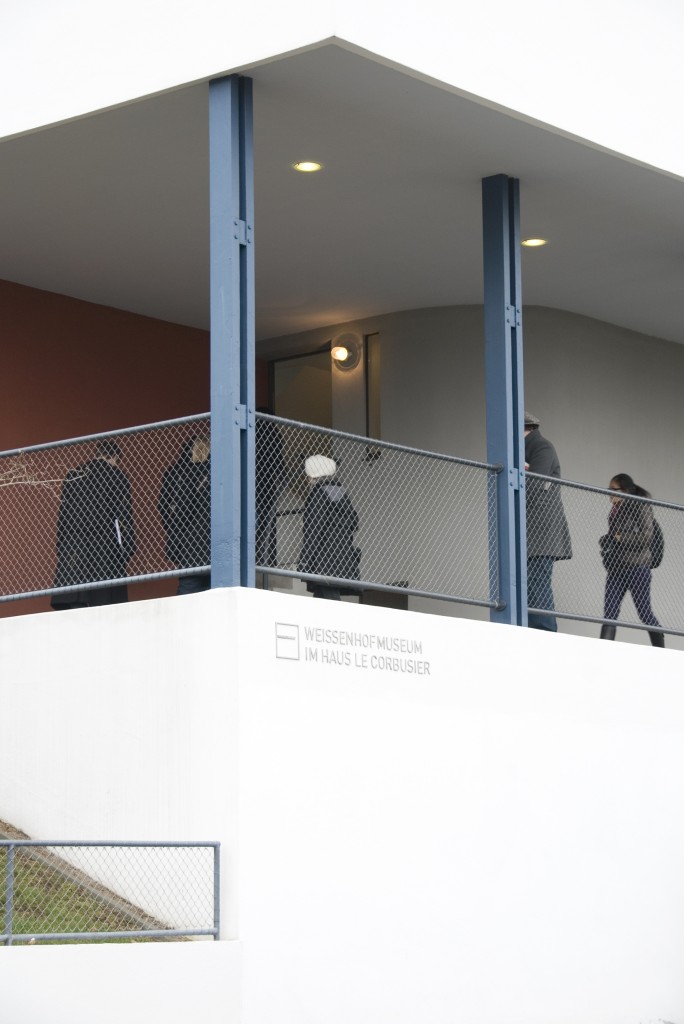
James Stirling’s Neue Staatsgalerie in Stuttgart was a perfect example where the museum became an important urban infrastructure, providing a public route through its museum while recalling various Roman elements and spaces.

At the end of the trip, we had some free time in Munich’s beautiful central district where many of its buildings remained relatively intact.

After a long day of architectural excursions, we stopped at Germany’s largest beer hall, Hofbrauhaus for dinner. Of course one cannot end this post about Germany without talking about its incredible beer and food. Unlike Italian food, German food is usually served huge amounts and has a special emphasis on meat. The beer is fantastic (try paulaner or franziskaner). And since there is no way to try to accurately describe what a German beer tastes like, you will have to go there and see for yourself!




The blog is looking great, and the new format is certainly an improvement over the previous version. Keep up the good work! It’s great to see what you are all up to over there.
-Tim